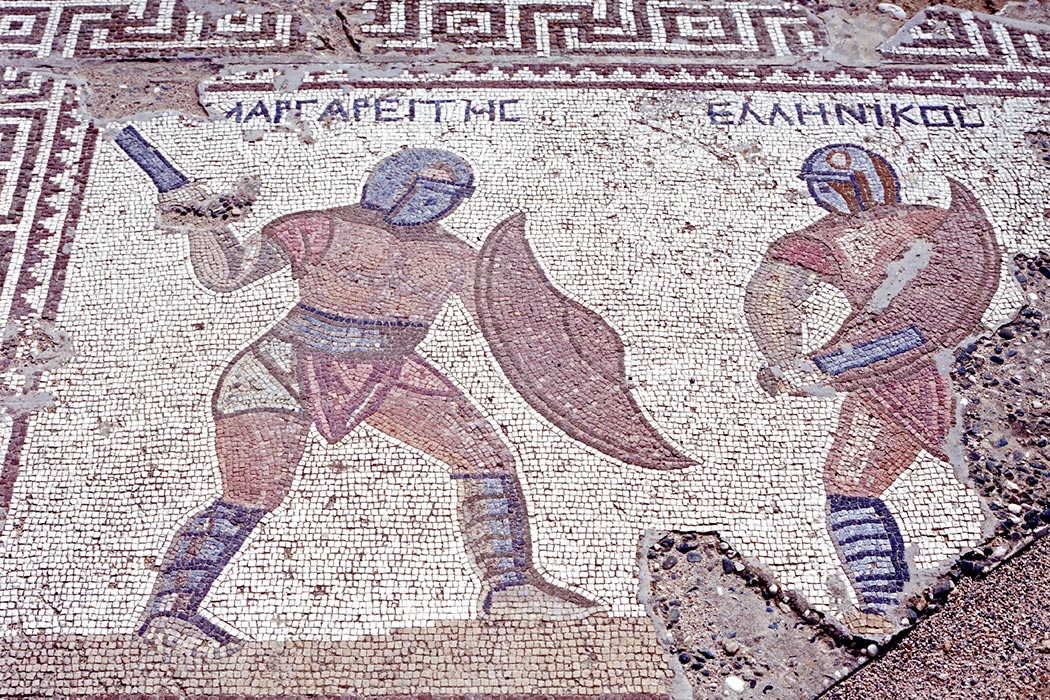After a long day fighting to the death, nothing is more refreshing than a delicious glass of…vinegar and ashes. Yum! Scientists analyzed the isotopic ratios in unearthed skeletons found in a gladiator graveyard in Ephesus, Turkey, revealing unusually high levels of the element strontium. An ordinary diet alone would not provide much strontium, but ancient texts referred to a drink made of ashes, and ash is a major source of strontium. The skeletons suggest that the beverage was real, but why did they drink it?
While some achieved fame, many gladiators were slaves or prisoners with no right to an honored burial, and so were buried in obscurity. Archaeological evidence of these gladiators is rare. Consequently, the Ephesus discovery has provided some of the best information about the gladiator’s world, according to Andrew Curry, writing in Archaeology. The analysis of the skeletons revealed not only the ashy drink but also the fighters’ carbohydrate-rich diet. One interpretation of the evidence is that carbs were cheap, but an intriguing possibility is that the gladiators needed those carbs in order to become sufficiently fat, according to Curry. Given the rigorous training, gladiators would have had to eat mountains of carbs. The idea is that fat served as natural armor, for a wound to the fatty layer bleeds profusely and provides a good show for the crowd but does not do lasting damage or incapacitate the fighter. The lean, ripped gladiators of legend would not have lasted past their first bout if this theory is correct.
Fat or no fat, gladiators must have been very fit and healthy. It seems incongruous, but owners cared greatly for the health of their fighters. New gladiators were given years of training in multiple combat techniques before the first fight, and were provided with top-flight medical care. Since gladiators were expensive to procure, feed, and train, owners wanted them to fight multiple times and provide a return on the investment. Rather than a no-holds-barred bloodbath, real gladiators had to fight according to very specific rules, enforced by a knowledgeable referee, according to M.J. Carter in The Classical Journal . Spectators may have come more to watch the fighting techniques on display than the blood. Most matches were not death matches, and the Ephesus cemetery included at least one fighter’s wife, so some gladiators must have lived long enough to have a family. Nevertheless, it was always at the end a brutal business. Every single one of the Ephesus skeletons died traumatically from either stab wounds or blows to the head.
Before it came to that, they drank the ashy concoction along the way. Why? While carbs are great for packing on the pounds and fueling up before a grueling trident battle, they are terrible for bone health. As Curry points out, some of the helmets alone weighed eight pounds, let alone the weapons and other equipment, so strong bones were a must. Ash is very high in calcium, so essentially the ash drink was an ancient calcium supplement. And the taste? With the aid of a classics scholar, I’m going to make some. I’ll let you know how it turns out.







